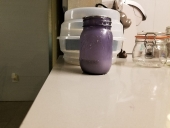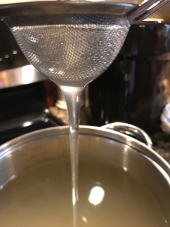I have only made ACV once, and it did not look like that at all! But I do have lots of experience with fermentation, from kombucha, kefir, lacto fermented veggies, sour dough... I'm going to assume that something bad came into contact with your ferment, except that usually ends up with mold and I don't see any mold there. How does it smell? Mine was a bit cloudy, but smelled and tasted like ACV. Culprits to bad ferments are usually something in the jar, lid or untencils, or something on the skin of the fruit, but sometimes it is caused by a natural yeast near by. For example I had a batch of sour dough that suddenly changed its form and smell, I knew the smell was familiar, but it took a couple days to realize it was the pineapple I had set not far from the jar. Turns out pineapple skins give off a lot of yeast. The best advice I can give is to leave it a short time and see if it improves, sometimes things can look a little narly before they adjust and complete the fermentation process. After that "when in doubt, throw it out", but don't be afraid to try again, like I said it could have just come in contact with something off. I have used the exact same process for doing fermented carrots and once the batch was just off, I tossed it and started again, have never had it happen again and I'll never know exactly what went wrong. Good luck.




